2011-12-19
SiliconCore Technology has launched its breakthrough 1.9mm pitch LED display panel technology with a high integration, low power LED Driver integrated circuit for indoor applications.
The device can drive up to 128 RGB (Red-Green-Blue) LED pixels resulting in a drastic component count reduction. The fine pitch technology also pioneers the use of “Common Cathode” RGB LED topology which results in up to 30% reduction in power dissipation and overcomes the overheating issue.
Other innovations include ghost image elimination, true 16-bit color, dra...
Continue reading →
2011-12-14
UK-based manufacturer of cadmium-free quantum dots, Nanoco, has signed a joint development agreement with a global LED lighting company.
The colour performance of the quantum dot technology attracts commercial LED lighting. As a result, the cooperators will see the university spin-out's cadmium-free quantum dots (CFQD) technology used in high volume LED lighting systems.
The 12 month agreement with the lighting company is expected to be followed either by further development work or by proceeding to product launch. But they haven’t disclosed the financial d...
Continue reading →
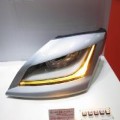 2011-12-12
2011-12-12
Recently, Koito Manufacturing Co Ltd has made use of the design freedom of LEDs to designed a head lamp and showcased it at the 42nd Tokyo Motor Show 2011.
The head lamp, named "Ganriki" (eye force), is shaped like a human eye and the most distinctive feature is its winker lamp (the part emitting yellow light in the picture).
The LEDs vertically arranged on the fender side emit light downwards and inward while the LEDs horizontally arranged at the bottom emit light inward. The emitted light is guided to the light guiding path made by injection molding of ...
Continue reading →
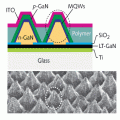 2011-12-09
2011-12-09
Recently, the Samsung Advanced Institute of Technology and Seoul National University have made an announcement that the first LEDs to be fabricated on amorphous glass substrates. As we know, manufacturers may peffer to improve GaN LEDs on silicon substrates (GaN-on-Si) rather than to choose gallium nitride (GaN)-based LEDs grown on crystalline sapphire wafers due to their expensive cost and are not amenable to large-sized wafer arrays. But the research conducted by the Samsung Advanced Institute of Technology and Seoul National University has found that...
Continue reading →
2011-11-24
Researchers from the University of Washington and Finland's Aalto University have developed and tested a contact lens that wirelessly displays a one-pixel LED image on a contact lens. According to the research, the lens was tested on anaesthetized rabbits "with no observed adverse effects." The embedded display in the lens receives data wirelessly through a radio antenna and displays it using a sapphire chip with an embedded micro-LED. The entire system is powered by a silicon power harvester that draws energy from a battery up to 2 cm away. Unlike virtual...
Continue reading →
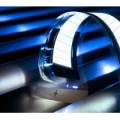 2011-11-18
2011-11-18
A project funded by the EU, known as IMOLA (Intelligent light Management for OLED on foil Applications), will put a focus on the development of large-area OLED-based lighting modules with built-in intelligent light management. These OLED-based lighting modules will be used in future energy-efficient wall, ceiling and car dome lighting, where the light intensity can be adjusted intelligently, e.g. according to the time of the day or weather conditions. OLEDs are paper-thin, flexible and lightweight electronic devices that consist of organic materi...
Continue reading →
2011-11-18
Researchers from the Harvard School of Engineering and Applied Sciences (SEAS) have made a breakthrough on a novel single-layer design for building quantum-dot light-emitting devices (QD-LEDs) by stacking quantum dots within an insulating structure having the shape of an egg crate. The new QD-LED has been claimed to resemble a sandwich with a single active layer of quantum dots nestled in insulation and trapped between two ceramic electrodes and the dots kept apart from each other by the egg-create design. QD-LEDs can be used in lasers, general light sources, ...
Continue reading →
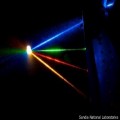 2011-11-14
2011-11-14
According to Sandia National Laboratories recent research, diode lasers could eventually compete with LEDs for home and commercial lighting solutions. Sandia National Laboratories recently asked participants to rate various LED and diode laser lighting scenarios and found that in some situations consumers preferred the diode lasers. As we know, LEDs are the most energy-efficient replacements for the incandescent bulbs. But less people know LEDs lose efficiency at currents higher than 0.5 amps. The diode laser actually improves at higher currents, which means it ca...
Continue reading →
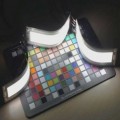 2011-11-14
2011-11-14
According to OSRAM, it has claimed to created the world's most efficient OLED lighting panel with an efficiency of 32 lm/W and a birghtness of1,000 cd/m². OSRAM's flexible OLED research was conducted as part of the TOPAS 2012 project - the same project in which OSRAM developed the 87 lm/W white OLED panel back in June. ...
Continue reading →
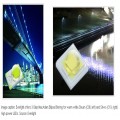 2011-11-11
2011-11-11
Everlight has released a 3-step MacAdam Ellipse binning of all warm white color temperatures -- 2700K, 3000K, 3500K, and 4000K CCT -- for the Shuen (C06) and Shwo (C19) high power lighting LED series. Everlight’s ‘Smart Binning’ initiative is aimed at reducing the variation in chromaticity in lighting applications. Color consistency is a key determinant of a product’s quality and appeal in lighting applications. This consistency is not only determined by the control of chromaticity from LED to LED inside a product but from one comple...
Continue reading →
2011-10-14
98 CRI milestone for light quality drives LED adoption in retail, hospitality, residential and museum applications
Intematix Corporation, a leading innovator of patented phosphor materials and components for high-quality LED lighting, today announced that it has demonstrated a phosphor blend that provides a near perfect color rendering index (CRI) of 98 and R9 value of 99 when applied to a reference LED package. The results highlight Intematix's unique phosphor leadership in the LED lighting industry, as the phosphor blend combines three separate material famili...
Continue reading →
2011-10-05
At the Strategies in Light Europe conference, Texas Instruments Incorporated (TI) (NYSE:TXN) introduced two highly integrated, phase-dimmable AC/DC LED lighting drivers, LM3448 and TPS92070, for use in solid state lighting residential, architectural, commercial and industrial applications, such as retrofit bulbs, LED ballasts, downlights, spot lights and other luminaires. For information and samples, see: www.ti.com/lm3448-pr and www.ti.com/tps92070-pr.
TI is showcasing its LM3448 and TPS92070 at Strategies in Light Europe (booths #222, #224) in M...
Continue reading →
2011-09-13
Publish your product announcement, press release or case study on LEDinside. All articles are subject to evaluation before they are to appear on our website. The process of approving articles may take up to 2 working days or longer.
Add announcement feature can be accessed at the following entrances.
Continue reading →
2011-08-30
Recently, Universal Display Corporation from Ewing, New Jersey, has presented the Society of Photo-optical Instrumentation Engineers (SPIE) Optics + Photonics Conference held at the San Diego Convention Center in San Diego, CA from August 21 - 25, 2011. The company introduced advances in the companys white OLED lighting technology and showcased a potential application using white OLED lighting panels. DOE Solid State Lighting program titled“High Efficacy Integrated Under-Cabinet Phosphorescent OLED Lighting Systems”in par...
Continue reading →
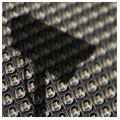 2011-08-25
2011-08-25
The IR OSLON SFH 4715S of OSRAM Opto Semiconductors is today’s smallest infrared LED with more than one Watt optical power. The device measures only 3.75 x 3.75 mm² and therefore facilitates very compact illumination units for CMOS and CCD cameras. OSRAM’s nanostack chip technology and a temperature stable OSLON Black Series package paved the way for the record-breaking high performance device. The infrared OSLON typically provides 1070 mW optical power at 1 A operating current, and it features a typical thermal resistanc...
Continue reading →
2011-08-08
Reportedly, Lebelight Technology Co. Ltd, a high power LED company from Xiaoyi, Shanxi of China has set up a new record on cutting-edge product 150 lm 1w LED on 12th, July 2011. 1w of its green lighting products needs only 350 mA of drive current to achieve 150-160 Luminous Flux, which has increased the world record by 70% and also reduced the cost in producing the same quantity of products. It’s said that this development is another world-famous breakthrough of Lebelight since its white lighting LEDs reached 98 lm on 3rd November 2010. It indicates that ...
Continue reading →
 2011-08-02
2011-08-02
Reportedly,networking researchers come from the Fraunhofer Institute for Telecommunications, Heinrich Hertz Institute HHI in Berlin, Germany, have used LED lighting to distribute Full HD movies to notebooks, smartphones and other devices, in a system that could join WiFi and PowerLine networks in shuttling high-speed data around the home and office. The optical WLAN co-opts white LEDs used for regular illumination to transmit data at up to 100 Mbit/s, by flickering it more rapidly than the human eye can see. The lighting units – which rely on norma...
Continue reading →
2011-07-25
Researchers from University of Illinois have utilized an epitaxial approach to develop a 3-D photonic crystal LED, the first such optoelectronic device.
According to Paul Braun, a professor of materials science and engineering and of chemistry who led the research effort, "We've discovered a way to change the three-dimensional structure of a well-established semiconductor material to enable new optical properties while maintaining its very attractive electrical properties."
Photonic crystals can control or manipulate light in unexpected ways with their unique ...
Continue reading →
2011-07-15
Toshiba's Tamonari Shioda has presented the company’s new discovery about the green gap in LEDs at the ninth International Conference on Nitride Semiconductors (ICNS). Currently, the green gap in LEDs is that the rapidly declining efficiency of green light emitters at longer and longer wavelengths. According to Toshiba's Tamonari Shioda, by inserting thin AlGaN layers in the active region of a conventional device, this approach could increase the output power of green LEDs by a factor of almost ten. ...
Continue reading →
2011-07-15
Reportedly, Samsung Advanced Institute of Science and Technology (SAIT) has set up a new record of manufacturing nitride LEDs on 200 mm silicon. Instead of sapphire,with this platform, the widely used substrate for making LEDs promises to cut the cost of LED deposition and processing. Growth of high-quality GaN layers on silicon is not easy,because of differences in both the lattice constant and the thermal coefficient of expansion of the two materials. SAIT has addressed both these issues by creating a crack-free template featuring AlN/Al...
Continue reading →
2011-07-15
Translucent, Inc., has designed a proprietary GaN-on-Si wafer template with embedded DBR mirrors for low-cost LED growth application.
With its new embedded silicon solution (Mirrored Si™), LEDs can now be grown directly on top of the GaN-on-Si template that includes an embedded DBR mirror, directly lattice matched to the silicon substrate.
On top of this DBR mirror is a layer of proprietary patented Rare Earth Oxide (REO), which allows GaN to cap the template and does not require subsequent removal of the substrate.
At present, the company i...
Continue reading →
 2011-07-15
2011-07-15
According to Philips, there may be a promising future for ambient lighting in glowing walls, therefore the company has scheduled to wallpapers containing integrated LEDs. The luminous sound-absorbing textiles would glow in variety of colors to cater to he user's requirements. Philips is collaborating with customizable acoustic panels Denmark-based anufacturer Kvadrat Soft Cells to evelop the luminous wallpaper panels. Soft Cells acoustic panels are flexible and can be tailored to fit a wide variety of interiors. The Philips' LED illuminated texture wallpape...
Continue reading →
2011-07-14
Recently, Uwe Strauss from Osram Opto Semiconductors has demonstrated the company’s improved green laser performance that are fabricated on the conventional plane of GaN,at the ninth International Conference on Nitride Semiconductors. According to Strauss , these lasers will target pico-projectors, where they can combine with red and blue equivalents to provide a lighting source with a small footprint that is free from a focusing element. Strauss introduce that the green source in a pico-projector producing a 100 lumen brightness must meet the requirements as...
Continue reading →
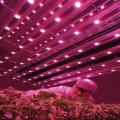 2011-07-12
2011-07-12
Illumitex recently has developed Surexi LEDs to accelerate plant growth while promoting maximum plant size and vitality. According to Illumitex ,the Surexi is the only LED on the market that includes a custom light spectra in a single LED package, eliminating the colour separation issues inherent in other horticulture LED lighting. Utilising Illumitex’s patented square light pattern and precision beam control, Surexi LEDs produce unrivalled edge-to-edge light uniformity while ensuring all plants receive the same amount of light – leading to more unifo...
Continue reading →
 2011-07-12
2011-07-12
Newly, Kyocera Corporation has developed the KVL-G3 Series LED-UV curing system, a key component in industrial printing machines. Combined with LED techology, the new product achieves a 70% reduction in power consumption compared to existing lamp-system products (metal halide). In addition, thanks to Kyocera's proprietary high-density packaging technologies, the company has succeeded in arranging LED chips on a high-density surface as opposed to in-line conventional products. With this development, Kyocera has enabled the fastest label printing capability...
Continue reading →
2011-07-12
RoseStreet Labs, (RSL), has utilized low cost silicon wafer substrates to develop the world's first long wavelength LED device.
The RSL longer wavelength device is fabricated utilizing commercial scale deposition tools at RSL's Nitride Research Center in Phoenix, Arizona.
In contrast to the more traditional sapphire or silicon carbide substrates typically utilized in LED fabrication, silicon substrates have a substantial cost advantage.
Green or longer wavelength nitride based LEDs are very challenging to fabricate compared to UV and Blue ...
Continue reading →
2011-07-11
Samsung Electronics Philippines Corp., has released Samsung SyncMaster SA950 3D LED monitor,featuring real-life 3D pictures,elegance of nature , Eco Motion Sensor and a “zero-bright spot” guarantee serves. According to the company, it is capable of showing real-life 3D pictures by adopting 3D HyperReal Engine, the reaction is particularly fast, enabling the monitor to produce vivid 3D images without dizziness. The new product is equipped with Ultra Clear Panel, which enhances color contrast for sharper images. Secondly, the new LED monitor is...
Continue reading →
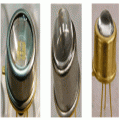 2011-07-08
2011-07-08
Sensor Electronic Technology, Inc. (SETi) has made a milestone to overcome the short lifetime of 280nm UVLEDs with of over 10,000 hours on its UVTOP275 LEDs. The lifetime demonstration has been performed on a statistically valid group of LEDs from several batches which are representative of UVTOP275 products; the LEDs were packaged in TO-39 metal-glass packages with flat windows and emit at a wavelength of 280nm ±5nm at an average power of 0.8mW after burn-in. Lifetime analysis was performed to SETi standard procedure; driven with a current...
Continue reading →
2011-07-01
Reportedly, Cooper Industries has made a harvest at 2011 Award for Design Excellence (ADEX) program for product design of furniture, fixtures and finishes marketed to the design trade. Each category has the potential for three award levels of Platinum, Gold or Silver. Design Journal Magazine sponsors the annual ADEX Awards.
Products from its divisions Cooper Lighting and Cooper Controls,were honored as Platinum winners include the io Balance Beam, Portfolio LED Downlight and Open Wall Wash Series, Lumiere Boca 696 Ingrade LED Luminaire, and th...
Continue reading →
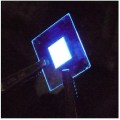 2011-06-23
2011-06-23
Reportedly, Researchers from IMRE, a research institute of Singapore's Agency for Science, Technology and Research (A*STAR), and the University of Michigan, US have turned out that the efficiency of fluorescent blue OLED devices can reach 9.4%, trumping the current theoretical limit for OLED external quantum efficiency (EQE) by nearly two-fold. This breakthrough has overcome the weakness of the blue emitters on short lifetime and poor colour quality, and it is likely to make OLED displays the next wave in consumer displays. By changing the thick...
Continue reading →
 2011-12-12
2011-12-12
 2011-12-09
2011-12-09
 2011-11-18
2011-11-18
 2011-11-14
2011-11-14
 2011-11-14
2011-11-14
 2011-11-11
2011-11-11
 2011-08-25
2011-08-25
 2011-08-02
2011-08-02
 2011-07-15
2011-07-15
 2011-07-12
2011-07-12
 2011-07-12
2011-07-12
 2011-07-08
2011-07-08
 2011-06-23
2011-06-23